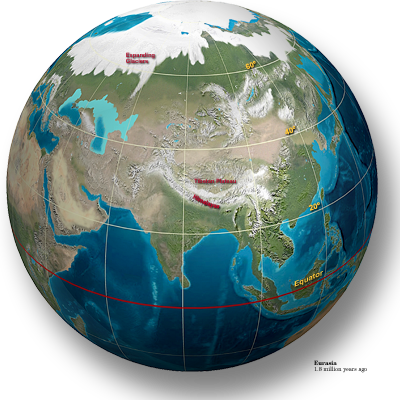
Forces of Change
Continental Uplift
The continents had been uplifted during the previous 15 million years.
Rising an average of 600 meters (1,965 ft.), they changed oceanic and
atmospheric currents that affect climate.
By two million years ago, much of North America and Eurasia was positioned at high latitudes, far from the equator. In the southern hemisphere, Antarctica was centered on the South Pole.
Solar Radiation
Changes in the Earth's orbit around the sun cause variations in the amount
of solar radiation hitting northern latitudes. During times of reduced
radiation, a cooler climate caused snow to persist year-round in Canada.
Glaciation
Glaciers depressed the continental crust as they grew and reshaped the
landscape as they moved. A large volume of water was trapped in the ice.
Sea levels lowered worldwide, exposing more land. At times, the ice sheet
advanced into the Atlantic Ocean, releasing many icebergs that changed
ocean currents as they melted.
Read more about these forces in the Museum's Ice Ages Web Exhibit.